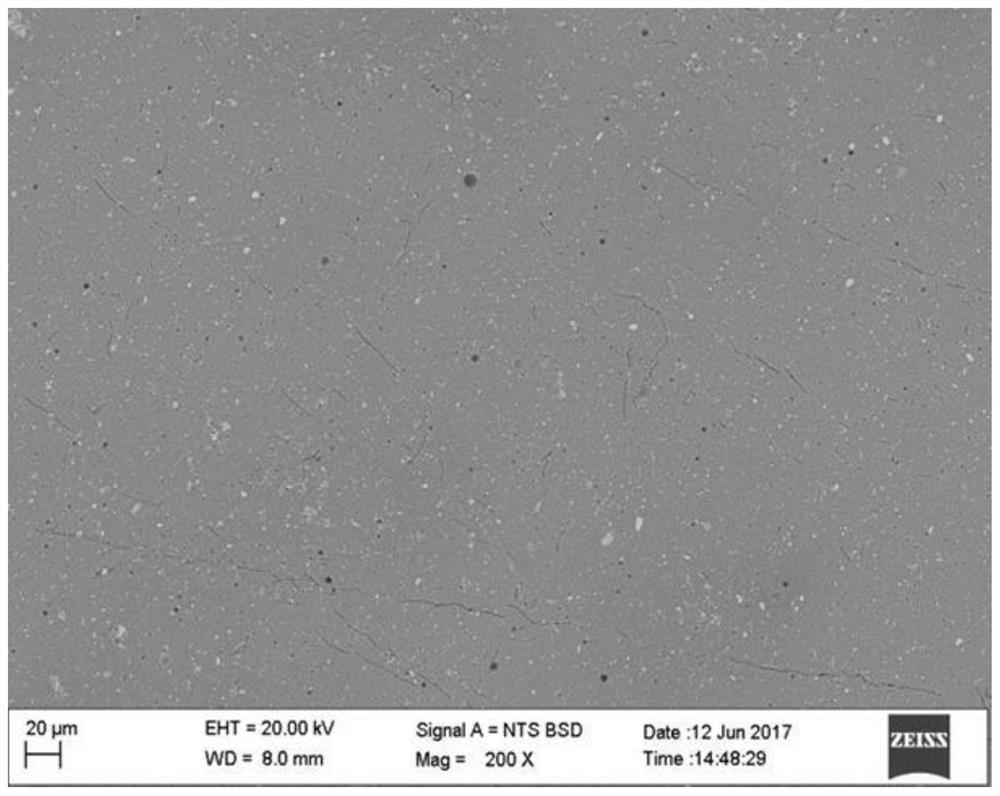A method for preparing glass ceramics using waste rare earth polishing powder
A rare earth polishing powder and glass ceramic technology, applied in glass forming, glass manufacturing equipment, manufacturing tools, etc., can solve problems such as effective treatment of lead-free tailings
- Summary
- Abstract
- Description
- Claims
- Application Information
AI Technical Summary
Problems solved by technology
Method used
Image
Examples
Embodiment 1
[0030] A method for preparing glass ceramics by using waste rare earth polishing powder, comprising the following steps:
[0031] (1) Weigh 30.006g of waste rare earth polishing powder and put it into a mold, place it in a high-temperature furnace, and pre-burn it at 400°C for 20 minutes;
[0032] (2) Pack the waste rare earth polishing powder after pre-burning into the mould, and use a molding pressure of 1000N to compact the waste rare earth polishing powder;
[0033] (3) Put the compressed rare earth polishing powder into the mold, put it into a high-temperature furnace, and heat it at 5°C min -1 The heating rate was raised to 650°C, and sintered at a constant temperature for 30 minutes;
[0034] (4) Then at 5°C·min -1 The heating rate was raised to 800°C, crystallized at a constant temperature for 30 minutes, and finally air-cooled to room temperature to make a glass ceramic sample.
[0035] The main components of waste rare earth polishing powder are: CeO 2 Ingredient...
Embodiment 2
[0038] A method for preparing glass ceramics by using waste rare earth polishing powder, comprising the following steps:
[0039] (1) Weigh 30.012g of waste rare earth polishing powder and put it into a mold, place it in a high-temperature furnace, and pre-fire it at 500°C for 90min;
[0040] (2) Pack the waste rare earth polishing powder after pre-burning into the mould, and use a molding pressure of 4000N to compact the waste rare earth polishing powder;
[0041] (3) Put the compressed rare earth polishing powder into the mold, put it into a high-temperature furnace, and heat it at 5°C min -1 The heating rate was raised to 750°C, and sintered at a constant temperature for 200 minutes;
[0042] (4) Then at 5°C·min -1 The heating rate was raised to 900°C, crystallized at a constant temperature for 200 minutes, and finally air-cooled to room temperature to make a glass ceramic sample.
[0043] The main components of waste rare earth polishing powder are: CeO 2 Ingredient 2%...
Embodiment 3
[0046] A method for preparing glass ceramics by using waste rare earth polishing powder, comprising the following steps:
[0047] (1) Weigh 30.009g of waste rare earth polishing powder and put it into a mold, place it in a high-temperature furnace, and pre-fire it at 450°C for 70min;
[0048] (2) Pack the waste rare earth polishing powder after pre-burning into the mould, and use a molding pressure of 2500N to compact the waste rare earth polishing powder;
[0049] (3) Put the compressed rare earth polishing powder into the mold, put it into a high-temperature furnace, and heat it at 10°C min -1 The heating rate was raised to 700°C, and sintered at a constant temperature for 120 minutes;
[0050] (4) Then at 10°C·min -1 The heating rate was raised to 850°C, crystallized at a constant temperature for 120 minutes, and finally air-cooled to room temperature to make a glass ceramic sample.
[0051] The main components of waste rare earth polishing powder are: CeO 2 Composition...
PUM
| Property | Measurement | Unit |
|---|---|---|
| flexural strength | aaaaa | aaaaa |
| Vickers hardness | aaaaa | aaaaa |
| flexural strength | aaaaa | aaaaa |
Abstract
Description
Claims
Application Information
 Login to View More
Login to View More - R&D
- Intellectual Property
- Life Sciences
- Materials
- Tech Scout
- Unparalleled Data Quality
- Higher Quality Content
- 60% Fewer Hallucinations
Browse by: Latest US Patents, China's latest patents, Technical Efficacy Thesaurus, Application Domain, Technology Topic, Popular Technical Reports.
© 2025 PatSnap. All rights reserved.Legal|Privacy policy|Modern Slavery Act Transparency Statement|Sitemap|About US| Contact US: help@patsnap.com


